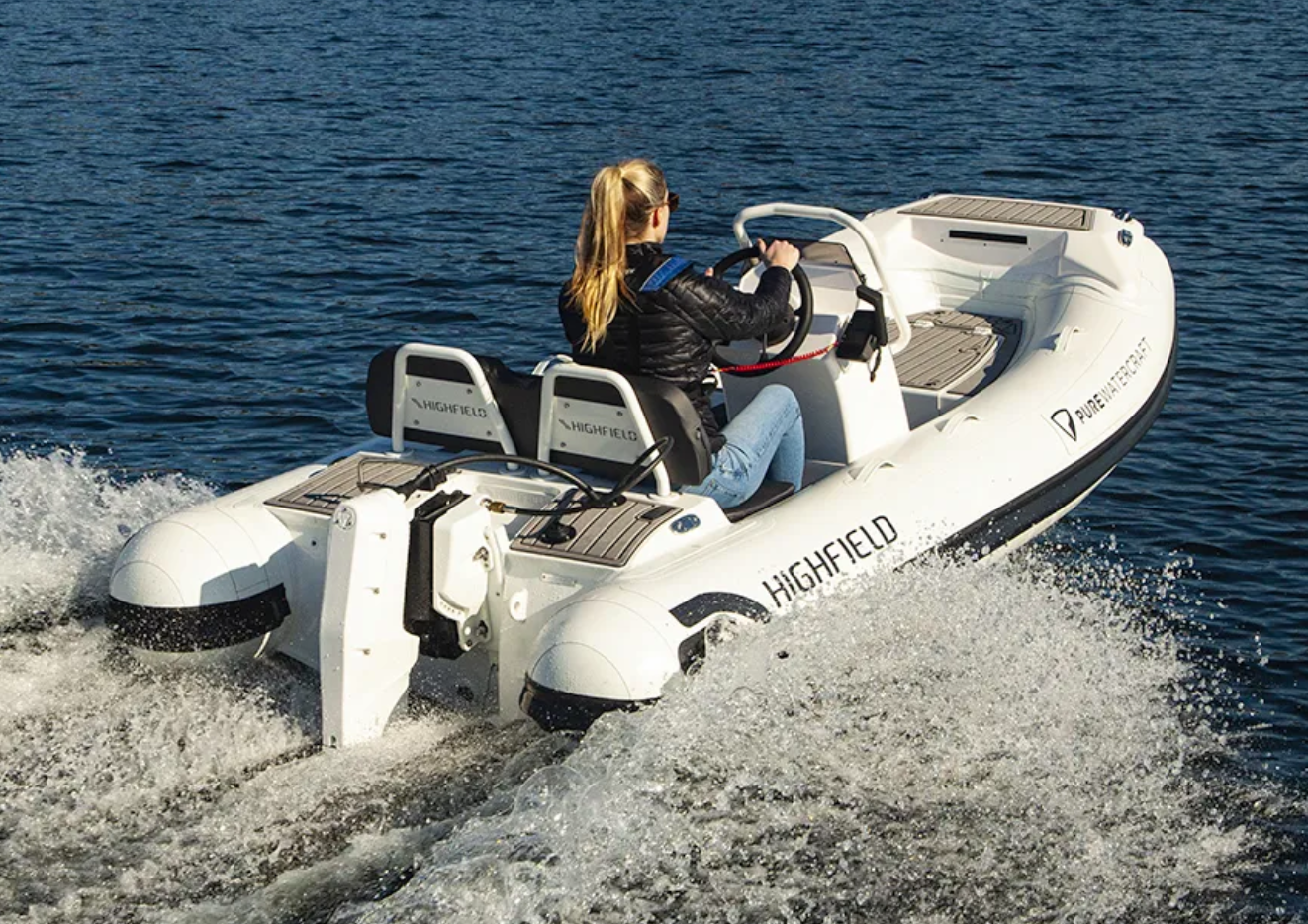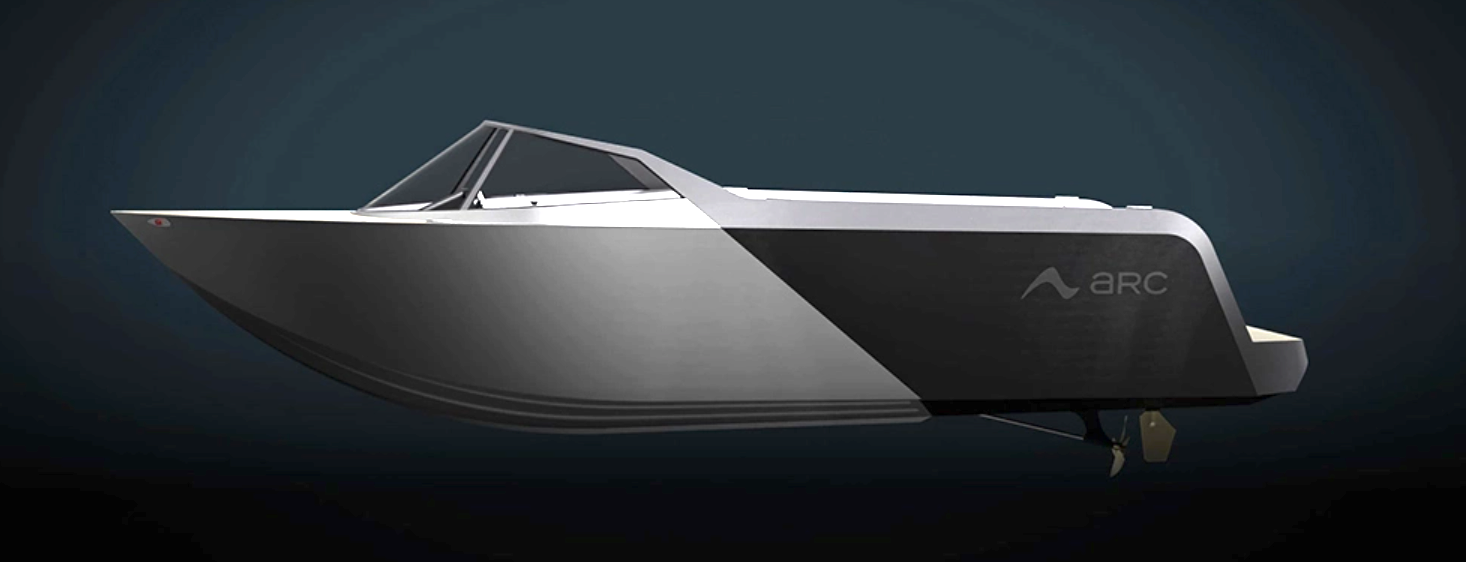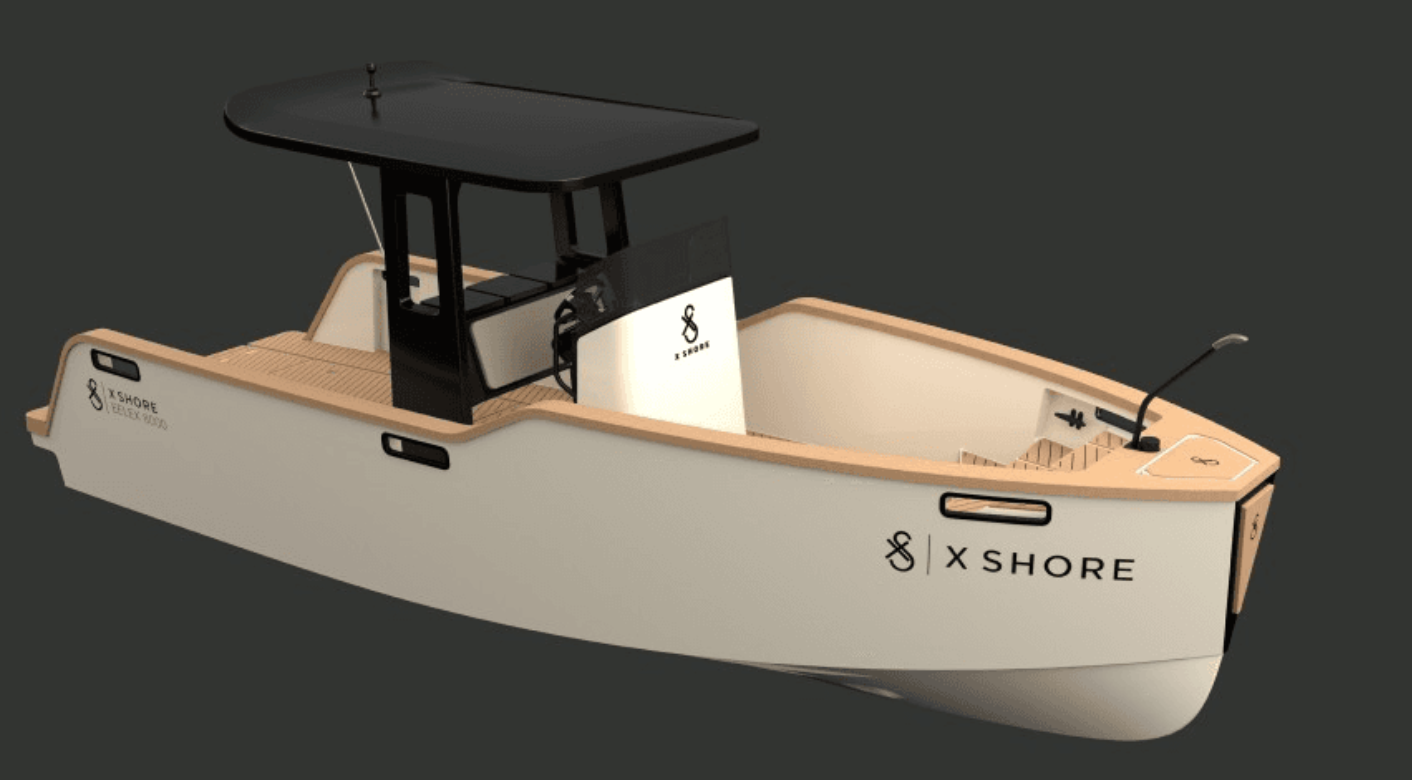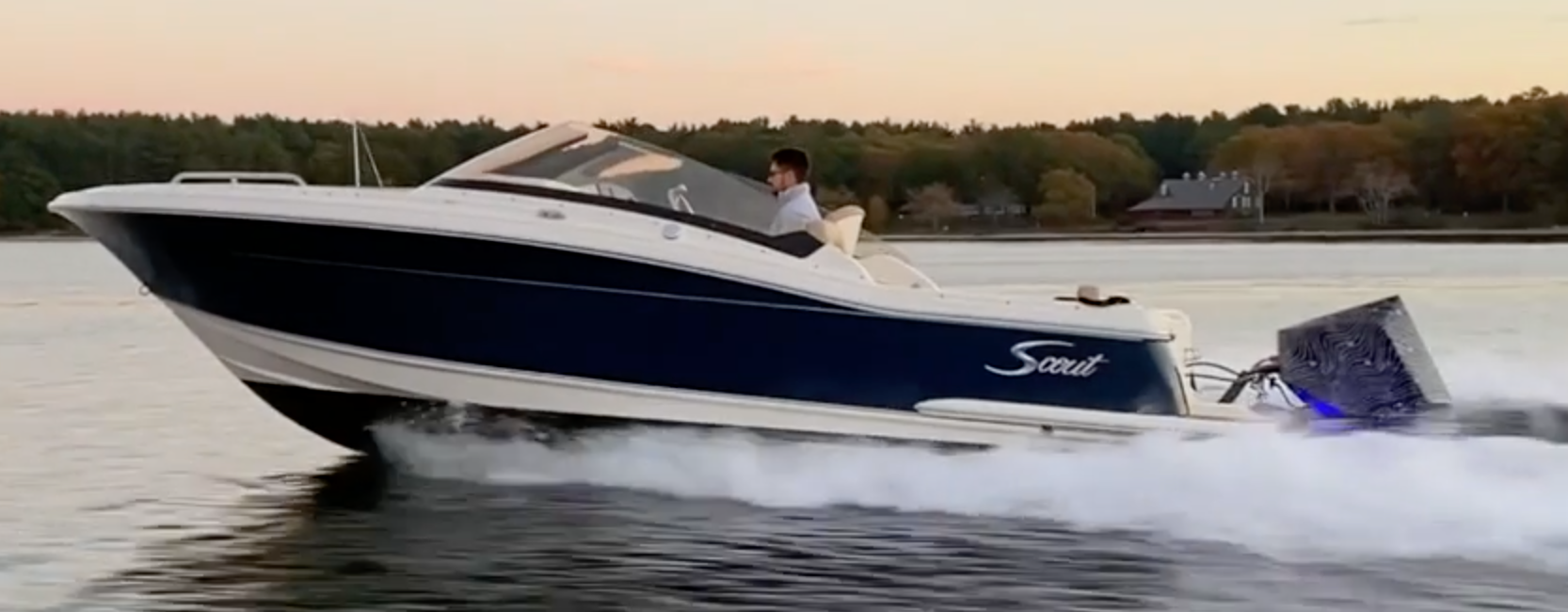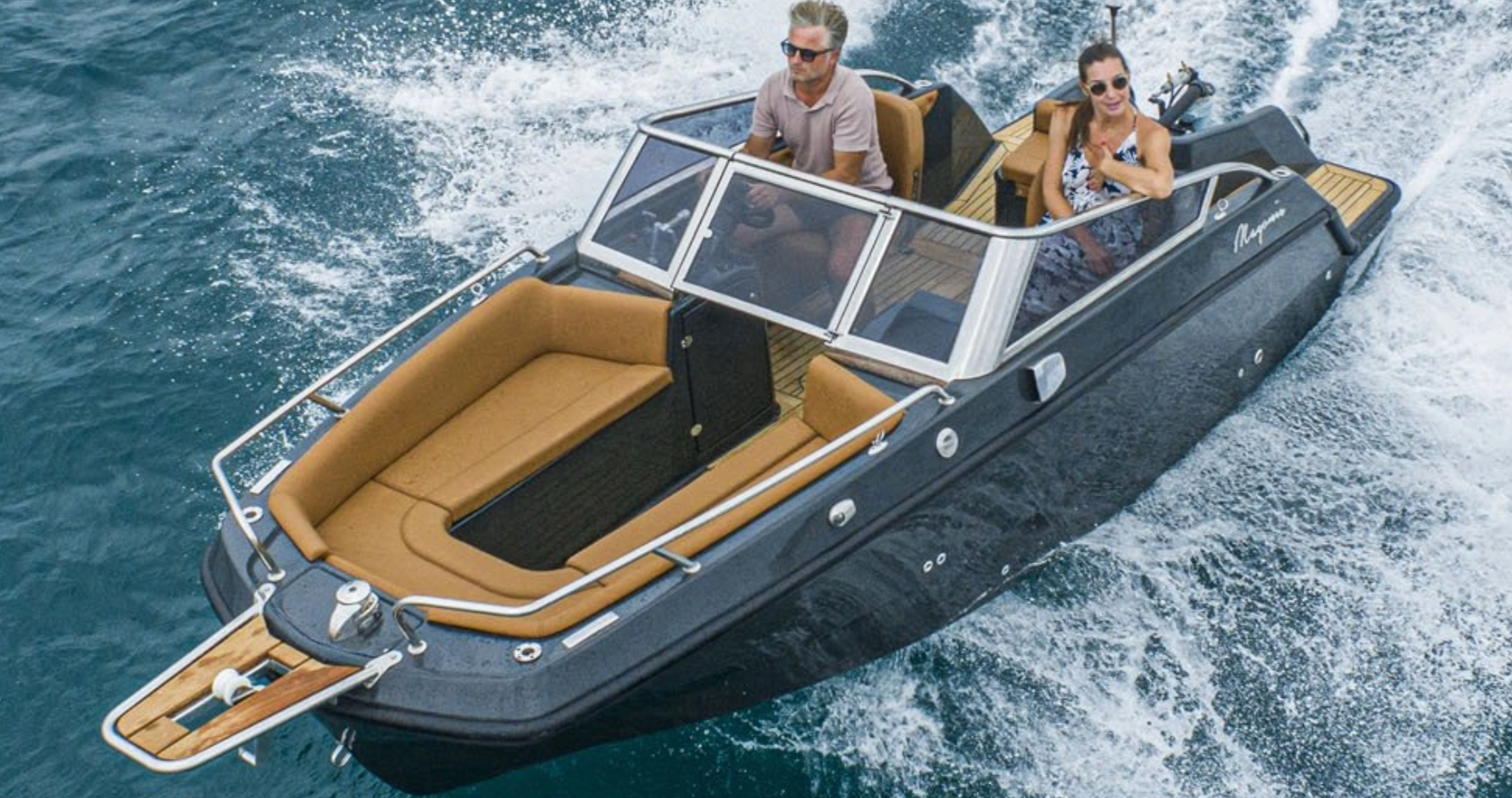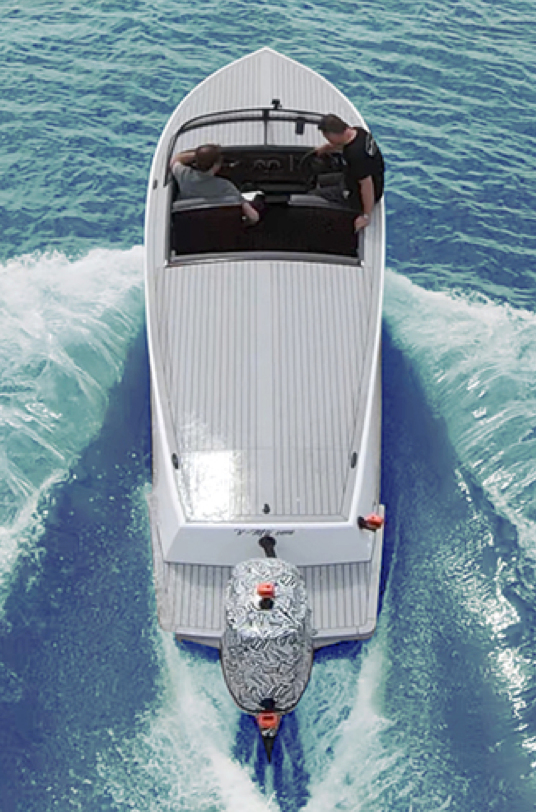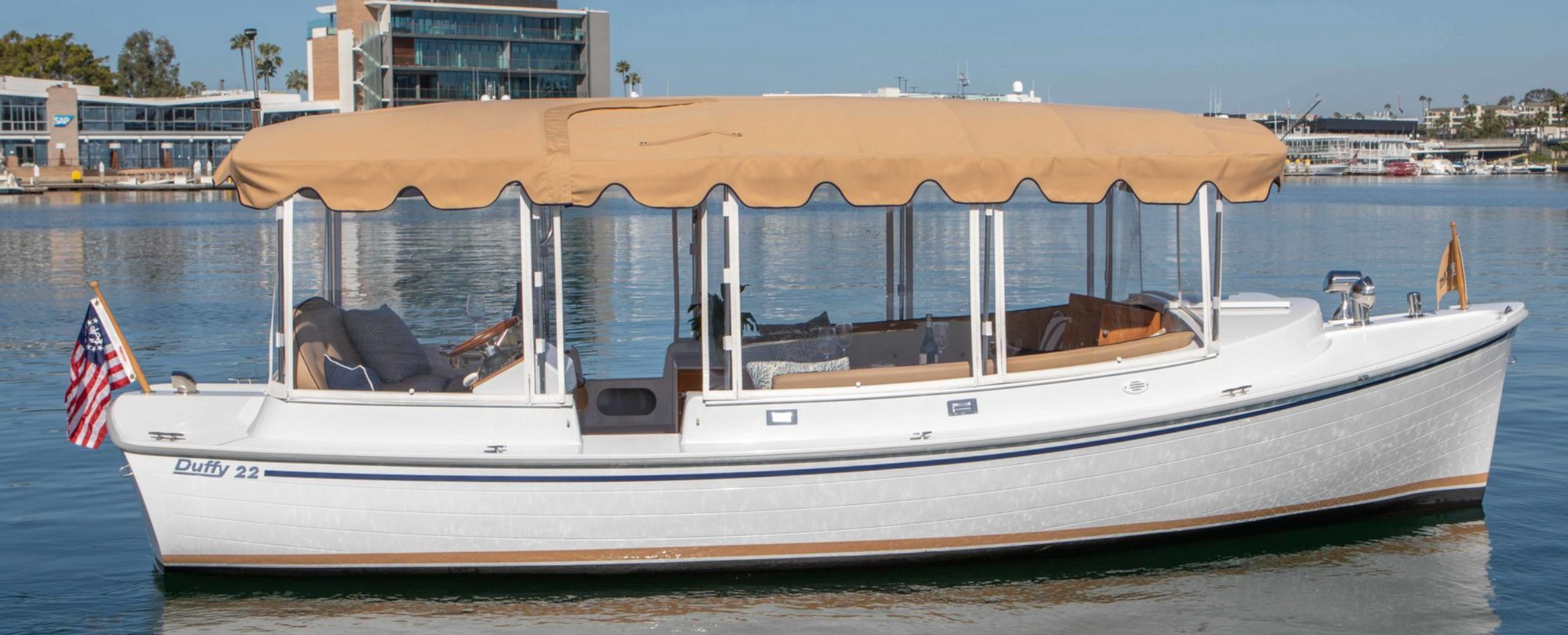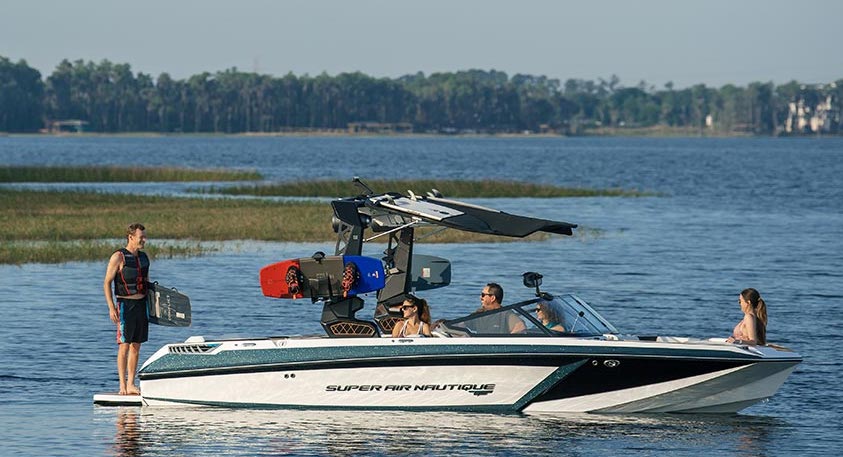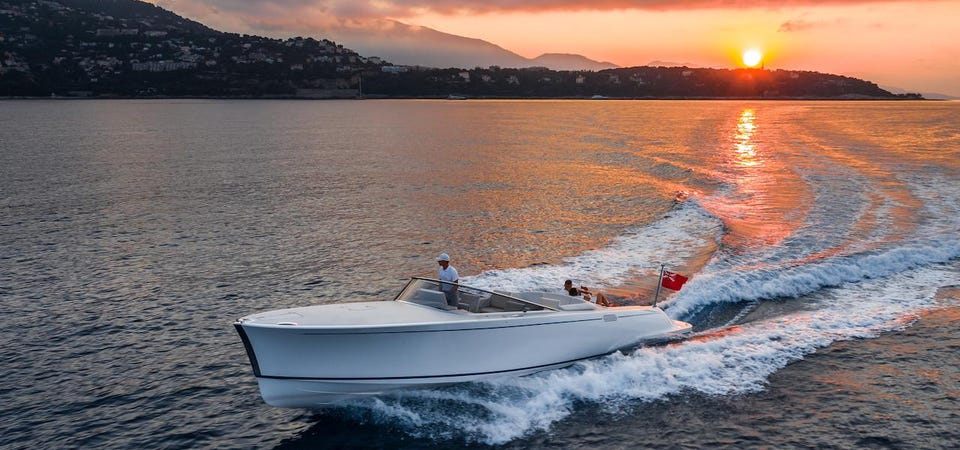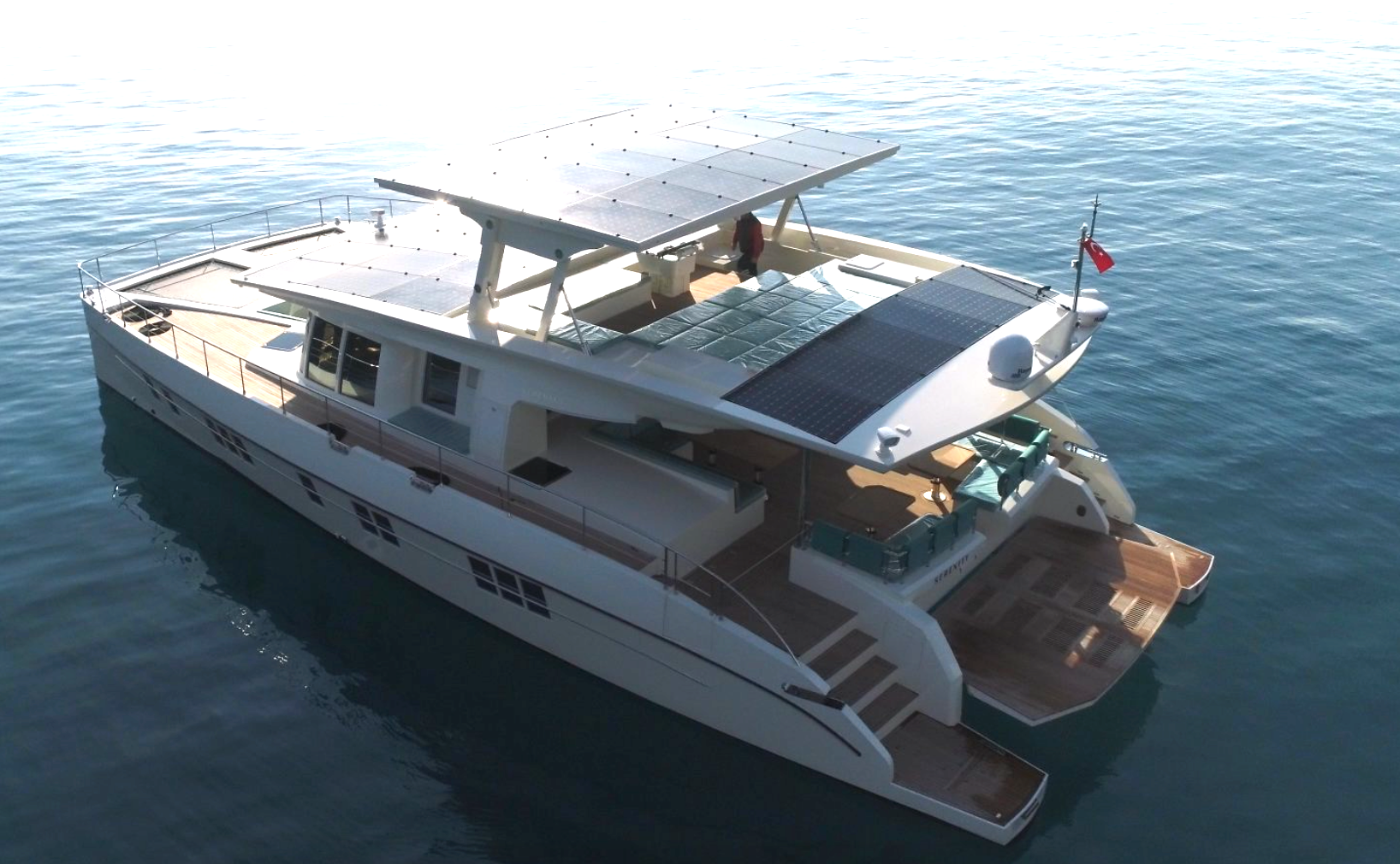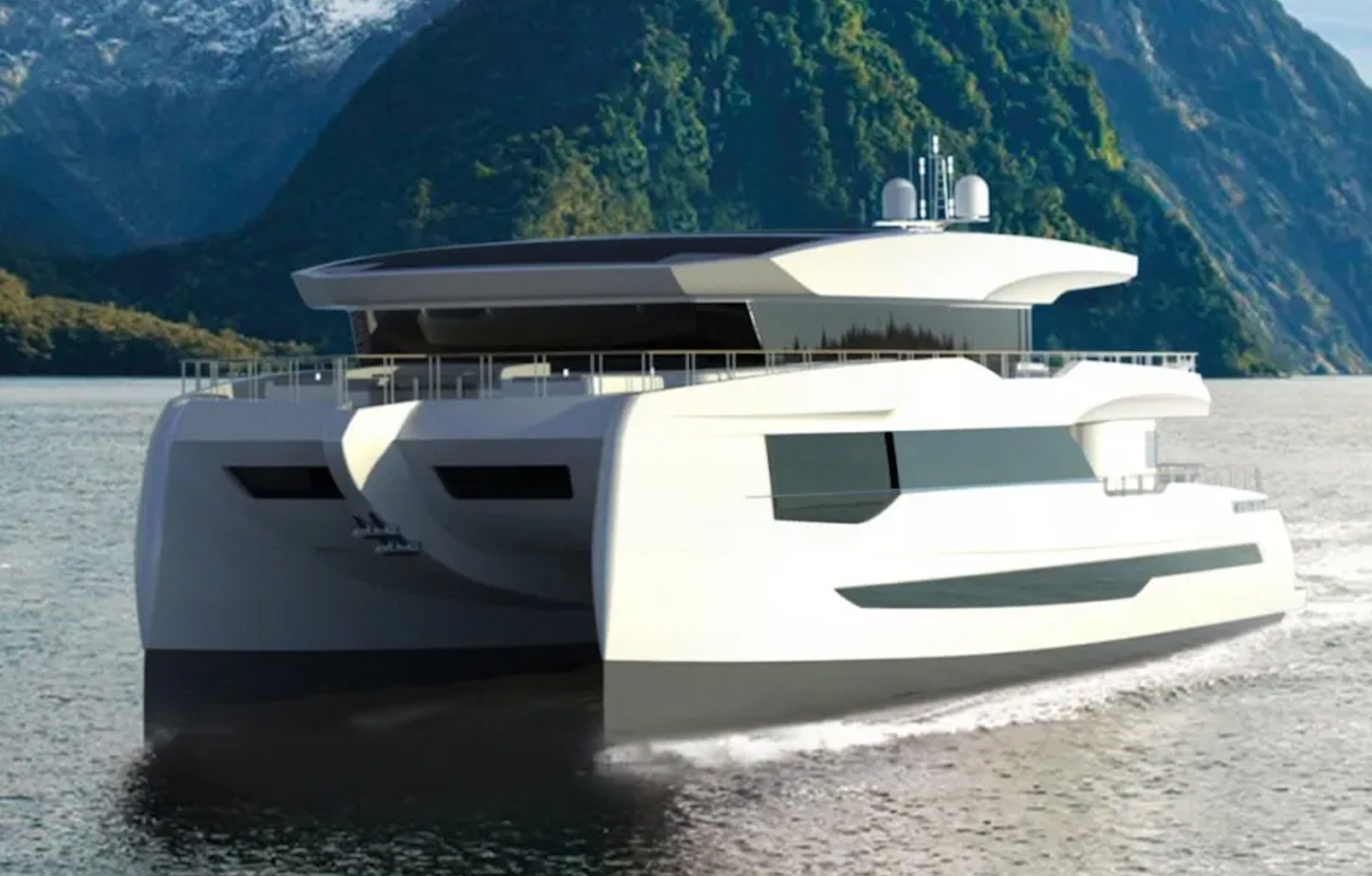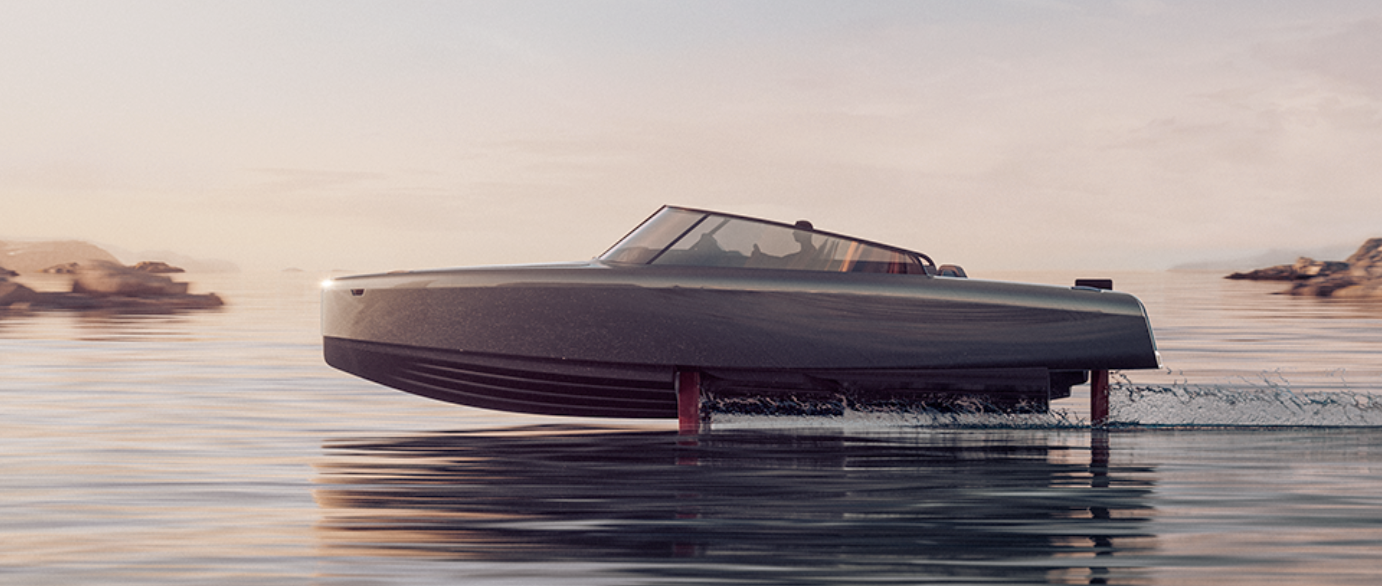Electric Boats Roundup
A fleet of battery-powered boats more advanced than ever—plus the new E1 electric boat racing series. By Doug Thompson
Like cars, more boats are being powered by electricity. While far in the minority, one day all-electric boat power will be common and the old gas guzzlers will be relics, trotted out for show on a weekend, or just as likely, propped up on the shoreline with no gasoline to power them.
An important question to ask yourself is: Where do you lie on the curve of development? Are you an early adopter who wants to help usher in the age of electric motors? Or do you favor proven technology and will only be willing to buy an electric-motor powered boat when all the kinks are worked out?
Know the Lingo
A note about rating electric motor capabilities using the term horsepower, which is how we rate diesel and gas engines. Horsepower is actually not the proper term to use — kW is the proper unit of measure — but consumers need to be educated, according to Alex Mongeon, CEO and founder of Vision Marine Technologies, which builds electric boat motors.
“We are following the electric car industry and people know horsepower,” Mongeon said. “The formula to convert kW into horsepower, is to multiply motor’s kW x 1.3355. So our E-Motion 180E motor at a continuous power of 130 kW is equivalent to 180 horsepower.”
“The conversion is not an exact science because the kW is a fluctuating measure and can stress up or stress down since so many factors contribute to the end power available,” Mongeon continued. “We actually have well over 134 to 138 kW depending on tests. We decided to commercialize at 130 kW to assist the public in learning this new way of working the horsepower into kW.”
If you are considering an electric boat, here’s an Electric Boat Round-Up to help you determine where you sit on the curve. Be sure to read through to the end to learn about the new E1 Series electric boat racing competition announced from Monaco.
Categories of Electric Boats
Categories include electrically powered bass boats, sport boats, cruising boats and luxury cruising catamarans with cabins and galleys that use solar panels to recharge batteries. One company, Candela, makes a hydrofoil electric boat that uses an innovative propeller deployed within a hydrofoil to run above the waves.
Bass Boats, Pontoons, Tenders
Bass boats, pontoons and Rigid Hull Inflatables (RIBs) are a good fit for electric power because they don’t require much power. Aluminum and fiberglass are the hull materials.
Pure Watercraft RIB Classic Deluxe 380
Pure Watercraft in Seattle is perfecting its Pure Outboard System to work with manufacturers whose boats are powered by small outboards. For example, Pure Watercraft co-created with Highfield Boats (https://www.purewatercraft.com/) a 12.5’ (3.81 m) long RIB tender that delivers performance using the Pure Outboard System. Using a 8.8 kWh battery pack that weighs 118 lbs. (53.52 m), the 25-kW motor can power the RIB to 25 mph, with a range of 43 miles at lower speeds. Using multiple battery packs increases range, and the Pure Outboard System is also offered on Sun Tracker Pontoon boats and Tracker bass boats. It’s also easy to replace a gas outboard for a Pure Watercraft electric, as this video shows: https://vimeo.com/465837431
Sport Boats
Electric sport boats measure 18’ (5.49 m) to 25’ (7.62 m) and are built with fiberglass or carbon fiber.
Arc One
Founded by former rocket engineers, the Arc One (https://arcboats.com/) is 24’ (7.32 m) long and features cutting edge technology and engineering. The Southern California-based company is headquartered near Los Angeles International Airport, and is focusing on a single model with the Arc One. A novel aluminum hull design makes for a top speed of 40 mph, powered by an electric motor with the equivalency of 475 horsepower and 200 kWh battery. Average run time is three to five hours with a capacity of 10 people, and the boat is expected to debut in 2022.
X Shore Eelex 8000
The Eelex 8000 (https://www.xshore.com/) for X Shore based in Sweden is 26.2’ (7.99 m) long and is powered by a liquid-cooled 225-kW electric motor and a 126-kWh battery. It has a range of 100 miles, a top speed of 30 knots and a cruising speed of 20 knots. There’s an option to have the hull built out of flax fiber and recycled materials. The deck is covered in cork for superior function and sustainability. X Shore’s software is built on the Garmin platform that is accessible via touchscreen onboard and the X Shore app.
Flux Marine Dual Console
Flux Marine’s (https://www.fluxmarine.com/dual-console) dual console sport boat is 21.5’ (6.55 m) long. She offers an electric outboard and extended battery platform with the electrical equivalency of 150 horsepower at peak, a top speed of 38 mph and an estimated range of 75 miles. An extended battery platform allows for the longest range and delivers increased power and acceleration. An optional tow package available for towing toys and tubes. The Greenwich, RI, based company offers electric outboards in horsepower-equivalency ranges of 15, 40 and 70.
Magonis Wave e-550
The Magonis Wave e-550 (https://magonisboats.com/en-us/) sport boat cruises at three knots up to eight hours (range 24 nautical miles), when equipped with a Huracan Mag Power 30-kW motor. At 22 knots it can run 50 minutes, about 20 nautical miles. The Torqeedo Power 48-5000 battery has a 5-kWh capacity and is fully IP67 waterproof. The Magonis Wave e-550 can hold up to three batteries in parallel. The Italian company’s facility is in Sabaudia, a small coastal town south of Rome.
Vision Marine Technologies Volt 180
The Volt 180 (https://visionmarinetechnologies.com/volt-en/)is powered by Vision Marine technologies E-Motion 180E electric motor and 60-kWh lithium battery. While Vision Marine started out building boats 25 years ago, including the low-speed, harbor-friendly electric Fantail 217 and Quietude 156, it is ramping up to produce the 180E motor to provide power for existing boat manufacturers. The company went public last fall and is provides electric fleets for harbors, including many in Southern California. Vision Marine sells 100% electric boats, outboard motors, and technology to the marine industry via its website, rental boating companies, and through original equipment manufacturers.
Cruising Boats
Duffy Cuddy Cabin 22
Cruising boats like the Duffy Cuddy Cabin 22 (https://duffyboats.com/22-cuddy-cabin/) are a staple in Southern California harbors. Duffy electric models range from 16’ (4.88 m) to 22’ (6.71 m) and have been around since 1970 and are popular for owners and renters. The Cuddy Cabin 22 can carry 12 adults and has a top speed of 6.5 mph and can run up to 12 hours. The Cuddy has a unique look compared to the rest of the Duffy lineup, along with the ability to add a marine toilet up forward inside the Cuddy Cabin.
Super Air Nautique GS22E
The 22-foot Super Air Nautique GS22E (https://nautique.com/models/super-air-nautique-gs22e/overview) is the first 100% electric towboat. Developed from a partnership with sister company, Ingenity Electric, the GS22E’s motor provides 220 kW of peak power, and 145 kW of continuous power. That allows for instant torque delivery straight to the inboard prop for two to three hours of watersports use on a single charge of the 124-kWh battery. Nautique is celebrating its 96th anniversary, and is a subsidiary of Correct Craft.
Vita Lion
The Vita Lion (https://vita-power.com/boats/vita-lion/) claims to be the most-powerful electric cruiser on the market, and the 33’ (10.06 m) dayboat packs a 590-hp equivalent electric punch for a 37-mph top speed. Designed more as a superyacht tender to ferry eight guests, the Italian-built Vita Lion can cruise at 32 mph for around 58 miles. Vita’s Edinburgh-based Vita Power division developed the electric propulsion setup, with its massive 235kWh lithium battery pack and twin UQM electric motors driving a pair of water jets.
Catamaran Hulls
Catamaran hulls are also popular, essentially long-range cruisers that run at slow speeds and have cabin and living spaces. Solar panels are used to help recharge batteries.
Serenity 64
Serenity Yacht’s (https://serenityyachts.com/yachts/serenity-64) Serenity 64 uses 700 square-feet of panels for recharging, and can run at 8 mph. With almost 1,200 sq.-ft. (111.48 sq. m) of solar panels, the flagship Serenity 74 is even faster, with a 10-mph cruise speed. Serenity builds them with carbon fiber to shave weight and add strength. Both models features four VIP staterooms on the lower deck, while the upper deck features a large galley, interior and exterior dining area, and comfy seats up front.
Silent 100 Explorer
Silent-Yacht’s (https://www.silent-yachts.com/) four-deck Silent 100 Explorer catamaran has a solar-electric drive train for enhanced guest comfort. She measures 102’ (31.09 m) long with a beam of 45’ (13.76 m). Electric energy comes from solar panels in the hardtop. The solar energy is stored in a 800 kWh-capacity battery bank. Coupled to twin 340-kW motors, the Silent 100 Explorer has an economic speed of six knots, cruising speed of 10 knots and top speed of 16 knots.
Hydrofoil Boats
Candela C-8
Instead of punching its way through the waves, The Candela C-8 (https://candela.com/candela-c-8/) flies silently above the surface on three hydrofoils. Candela improved efficiency by developing a pod motor optimized for hydrofoils that runs under the water. The C-8’s propeller is designed to be deployed in four different modes: harbor mode, which is tucked under the transom; shallow mode, about even with the hull; planing mode, about a foot (.3 m) below the hull; and foiling mode for the highest efficiency. In foiling mode at 20 knots, the energy usage per nautical mile is just 0.8 kWh. To put that into perspective, that’s the energy content of .1 liter of gasoline.
RaceBird Foil
Electric racing foils are also on the horizon with the planned E1 Series in 2023 (https://www.e1series.com/). Built by SeaBird Technology and Victory Marine, the RaceBird watercraft will be equipped with a Mercury Racing electric powertrain and Navico navigation. The first full-size powerboat was revealed in Monaco, the planned site of the first E1 series race. RaceBird runs on hydrofoils at 58 mph, the electric motor powered by a 35-kWh battery from Kreisel, and boasts a peak power output of 150 kW.


